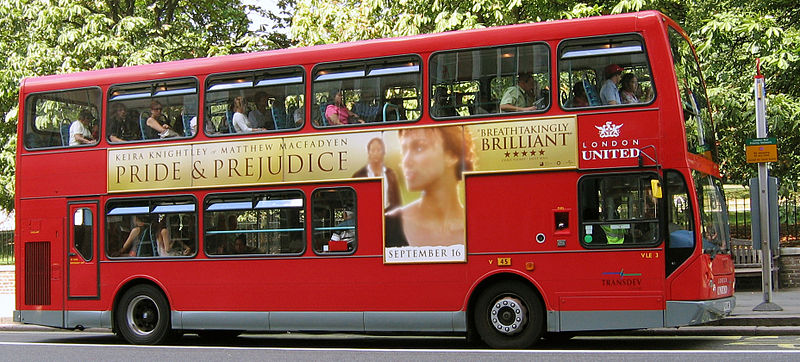
“It is a truth universally acknowledged that a single man in possession of a good fortune must be in want for a wife,” begins Jane Austen’s Pride and Prejudice, one of the most famous opening lines ever written. Pride and Prejudice is one of many titles that grace the classic collections of bookstores and private collections worldwide. Written by award-winning author Jane Austen, the tale emphasizes the value of family and depicts a society where a woman’s reputation is of the utmost importance.
Pride and Prejudice is an 1813 romantic novel that tells the emotional story of Elizabeth Bennet, who learns the errors of making a hasty judgement and eventually comes to appreciate the difference between the superficial and the essential. Mr.Bennet, Elizabeth’s’ father, has five daughters, but his property is entailed, meaning that none of his daughters can inherit it. His wife has no fortune either, so it is imperative that one of his daughters marry a wealthy man to support the others. The infamous tale is supposedly a satirical critique on social status and the expectations of women during the 19th century.
Marriage was an enormous deal in the 19th Century, much more important back then than today. Divorce was almost impossible to achieve, so the selection of a spouse for eligible young woman was a thought-out process. For a young woman, accepting the wrong proposal could prove to be catastrophic. Forbidden from inheriting and faced with overbearing obstacles if they sought their own earnings, women often capitulated their emotional, social and financial well – beings to their spouse. Once married, they ceased to have rights in front of the law, and became possessions rather than individuals.
Age and eligibility were directly correlated for a marriage prospect. Of the Bennet sisters, Lydia and Mrs. Bennet often mention Jane’s ability to ensnare an eligible gaze at the tender age of 15. The thought of marriage loomed over the heads of many young, middle class ladies, but it was also a prominent thought for the older women on opposite side of the spectrum. In Pride and Prejudice, Charlotte Lucas was widely considered too old to marry at the age of 27. The concept that the appeal of a woman has an expiration date has still remained eminent. However, today that expiration date has increased to the age of 37 for a woman.
In the Pride and Prejudice age, the courtship process was a concealed one: An unmarried couple was not allowed to spend time together without a chaperone. Today, in a world where most have a social media platform, that environment is no longer true — every step of one’s life, including the “private,” is plastered in the open for the whole world to see. Digital dating allows those looking for a life long partner to swipe through an endless line of faces (as well as a synopsis of the user’s hopes and dreams) for a few dates unlike having a year long courtship to familiarize yourself with one person.
Elizabeth Bennet succeed in “marrying-up” or above her socioeconomic bracket when she marries Darcy. Today, financial security is not a primary characteristic that women look for as they are able to attain and sustain jobs and be independent from their male relatives. It’s also a lot easier to be single today then it was in Austen’s time.
Pride and Prejudice may be over two hundred years old, but its themes of courtship and marriage remain evergreen. While some factors have changed, the game remains the same. Austen’s plots remain useful in today’s dating scene and her characters promote contemporary ideas. For one, Austen’s heroines don’t settle when it comes to making decisions of the heart and they don’t let their parents dictate most of their choices. Her heroes essentially court strong female characters — whether that be of character or mind. Marriage may look different in the 20th Century then the 19th Century, but many of Austen’s fictional worlds emphasize the idea that marriage should primarily be for romantic happiness.
Pride and Prejudice (2005) received innumerable awards including BAFTA Award for Outstanding Debut and received many more nominations. Recently, Bonnier Zaffre acquired the Pride and Prejudice spin-off debut that will tell the story of Charlotte Lucas, Elizabeth Bennet’s closest friend in Pride and Prejudice.